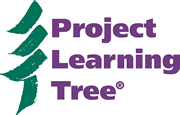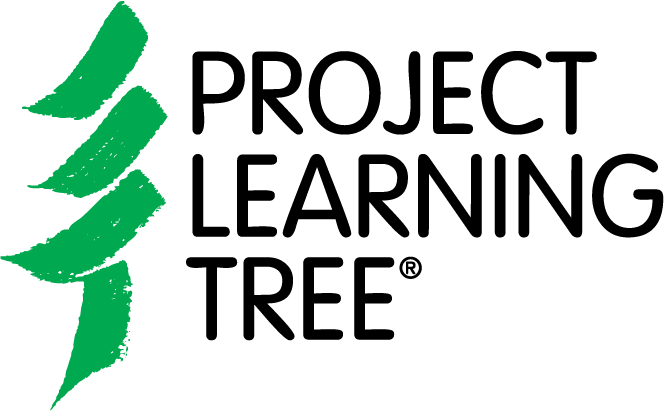PLT CANADA INDIGENOUS PERSPECTIVES STATEMENT OF INTENT
PLT Canada is committed to providing its network with guidance, curricula, and professional development opportunities that promote greater understanding, recognition, and respect for Indigenous Peoples’ rights, traditional knowledge, and distinctive relationships with the forest. We not only celebrate the existence of regional diversity, but also recognize that these particularities form the basis of authentic environmental education, sustainable forest management, and relationship building with Indigenous Peoples. PLT Canada strives to identify themes, topics, and curricular alignments that provide environmental educators with resources to bring each concept to life within their own context through collaboration with Indigenous communities, educators, and knowledge holders.
FIRST PEOPLES’ PRINCIPLES OF LEARNING (FPPL)
In 2006/2007, the First Nations Education Steering Committee (FNESC) designed the First Peoples’ Principles of Learning (FPPL) to guide K-12 curriculum development and the creation of British Columbia’s first English First Peoples’ course. Since then, K-12 educators and various organizations have adopted the FPPL as a guiding framework to decolonize and Indigenize their curricular and organizational structures across Canada.
The principles are as follows:
- Learning ultimately supports the well-being of the self, the family, the community, the land, the spirits, and the ancestors.
- Learning is holistic, reflexive, reflective, experiential, and relational (focused on connectedness, on reciprocal relationships, and a sense of place).
- Learning involves recognizing the consequences of one‘s actions.
- Learning involves generational roles and responsibilities.
- Learning recognizes the role of Indigenous knowledge.
- Learning is embedded in memory, history, and story.
- Learning involves patience and time.
- Learning requires exploration of one‘s identity.
- Learning involves recognizing that some knowledge is sacred and only shared with permission and/or in certain situations.
To learn more about the FPPL, visit fnesc.ca/first-peoples-principles-of-learning/.
UNITED NATIONS DECLARATION ON THE RIGHTS OF INDIGENOUS PEOPLES’ (UNDRIP)
In 2007, the United Nations adopted the United Nations Declaration on the Rights of Indigenous Peoples (UNDRIP). Addressing many issues that affect hundreds of millions of indigenous peoples across the globe, this declaration provides a framework governments can use to respect the human rights of indigenous peoples, including the right to maintain and educate non-indigenous peoples about caring for the land and natural resources on which we all depend. Article 15 of UNDRIP states that “Governments will work with indigenous peoples to educate non-indigenous peoples in ways that respect indigenous peoples’ rights and promote a harmonious society.” With so much to learn and so much at stake, who better to show and teach us about the land than the people who have lived on it and served it for thousands of years? (Reference: PLT Canada’s Trillions of Trees resource introduction.)
To learn more about UNDRIP, visit un.org/united-nations-declaration-on-the-rights-of-indigenous-peoples/.
CANADA’S TRUTH AND RECONCILIATION COMMISSION (TRC)
In 2015, Canada released its final report on the Truth and Reconciliation Commission (TRC). In the report, the TRC has established 94 Calls to Action, with 7 Calls to Action on Education and 5 Calls to Action on Language and Culture. PLT Canada is committed to upholding these Calls to Action with a narrowed focus on Call to Action 10.iv. Protecting the right to Aboriginal learners; including the teaching of Aboriginal languages as credited courses; and Call to Action 14.i. Aboriginal languages are a fundamental and valued element of Canadian culture and society, and there is an urgency to preserve them. (Reference: Final Report of the Truth and Reconciliation Commission of Canada Volume One: Summary Honouring the Truth, Reconciling for the Future (2015). (pg. 320 – 321).)
To learn more about the TRC, visit nctr.ca/about/history-of-the-trc/trc-website/.
To support Canada’s commitment to the TRC’s Calls to Action and UNDRIP, PLT Canada has embedded Indigenous perspectives in various activities throughout the Explore Your Environment: K-8 Activity Guide. We have enriched various learning activities from the guide with embedded Indigenous perspectives, inviting elders and research activities. We have also added opportunities for Indigenous language learning and videos on Indigenous perspectives. PLT Canada offers these enriching learning opportunities to support educators and their students with their own journey of reconciling with First Nations, Inuit, and Métis peoples who have been the stewards of Canada’s lands and waters since time immemorial.
INDIGENOUS LANGUAGE LEARNING
Including Indigenous language learning tools such as the First Voices applications allows educators to implement Indigenous language learning to their activity and lesson content. By implementing the First Voices application and Indigenous language learning, educators can foster inclusive teaching practices for Indigenous learners and promote reconciliation in their classrooms and schools. To use the First Voices application, begin by downloading the correct First Voices language applications to your learning environment’s digital devices (e.g., tablets, smart boards, chromebooks, etc.) For IOS (Apple), these can be accessed through the App Store application. For Android, these can be accessed through the Google Store application. Some Indigenous languages may not be accessible through the First Voices applications such as specific First Nations, Inuit and Métis language dialects.
To learn more about First Nations, Inuit and Métis languages, consult with your school’s or district’s Indigenous education liaison or visit language learning websites such as tusaalanga.ca/ and learnmichif.com/.
EMBEDDED PERSPECTIVES, INVITING KNOWLEDGE KEEPERS & RESEARCH ACTIVITIES
The following K-8 Guide activities have embedded Indigenous perspectives, invitations to invite an Indigenous knowledge keeper, and research activities:
A Tree’s Life (p. 14); Backyard Naturalist (p. 29); Bursting Buds (p. 40); Did You Notice (p. 44); Charting Biodiversity (p. 90); Discover Diversity (p. 97); Every Drop Counts (p. 104); Poet Tree (p. 143); Tree ID (p. 186); Exploration Energy! (p. 247); Improve Your Place (p. 293); Living With Fire (p. 315); Our Federal Forests (p. 342); Plant A Tree (p. 350); and Burning Issues (The Global Climate) (p. 375).
Try it out by referring to the embedded perspectives, invite an elder, and research activity call out boxes in each of these activities!
INDIGENOUS LANGUAGE LEARNING
The following K-8 Guide activities have Indigenous language learning opportunities:
Adopt a Tree (p. 21); Birds and Bugs (p. 35); Have Seeds, Will Travel (p. 50); Here We Grow Again (p. 57); Peppermint Beetle (p. 68); The Closer You Look (p. 72); Trees as Habitats (p. 76); We All Need Trees (p. 82); Fallen Log (p. 116); Signs Of Fall (p. 155); Soil Builders (p. 161); Tree Cookies (p. 171); Tree Factory (p. 180); Water Wonders (p. 206); Web Of Life (p. 216); Invasive Species (p. 299); Life On The Edge (p. 308); Land Acknowledgements (p. TBA); and Culturally Modified Trees (p. TBA).
Try it out by referring to the First Voices call out boxes in each of these activities!
VIDEOS ON INDIGENOUS PERSPECTIVES
The following K-8 Guide activities have videos on Indigenous perspectives:
Every Drop Counts (p. 104); My Green Future (p. 132); Poet-Tree (p.143); Water Wonders (p. 206); Exploration Energy! (p. 247); Invasive Species (p. 299); Reduce, Reuse, Recycle (p. 356); Renewable or Not? (p. 364).
Try it out by referring to the videos on Indigenous perspectives call out boxes in each of these activities!

